

Max Davies
2026 Toyota HiAce review
3 Hours Ago
We take a look at the fastest Italian road car ever made - and it's by Pininfarina.

Senior Road Tester


Senior Road Tester
The Pininfarina Battistatakes its name from Battista Farina, the iconic designer and founder of Carrozzeria ‘Pinin’ Farina (Pininfarina S.p.A.).
He founded the Italian automotive design firm and coach builder in 1930, with headquarters in Turin, Italy.
Pininfarina passed away in 1966, but not before penning his final work of art, the stunning Alfa Romeo 1600 Duetto. He died a month after it was revealed at the Geneva moto show.
His son, Sergio, took over the company and presided over some of the most beautiful cars ever designed, particularly those for Ferrari.
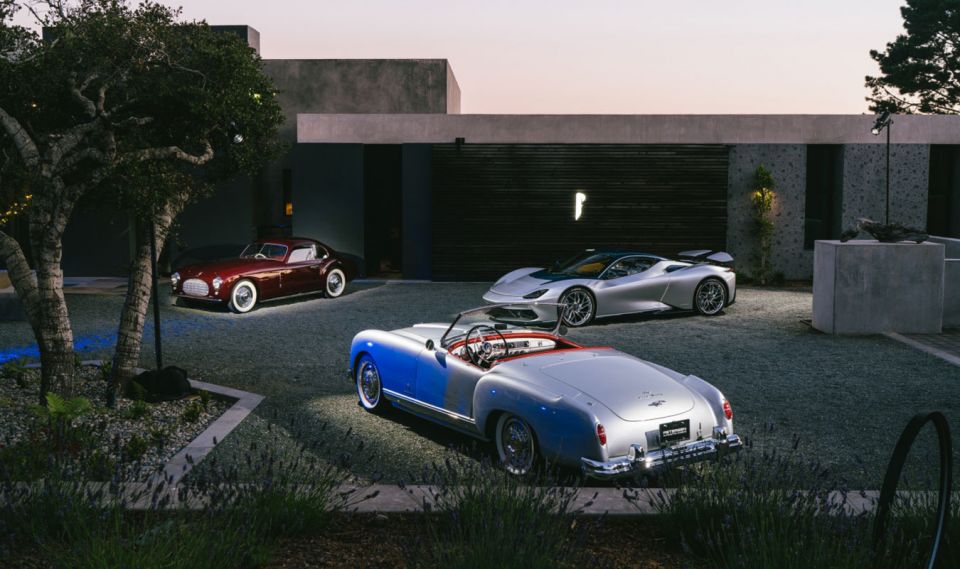
The body of work was extraordinary and featured head turners such the Dino (206 GT, 246 GT, 346 GTS), 365 GTB/4 Daytona, 308 GTB/GTS 400, Testarossa, 288 GTO, 328, Mondial Coupe and cabriolet, 412, F40, 348 Coupe and Spider, 456, 355 Coupe and Spider, F50, 550 Maranello, 360 Coupe and Spider, 550 Barchetta Pininfarina, 360 Coupe and Spider, Enzo, 575M Maranello, 612 Scaglietti, F430, 599 GTB Fiorano, 458 Italia, FF and F12Berlinetta.
It wasn’t just Ferrari – plenty of other carmakers have engaged Pininfarina to work its magic. Alfa Romeo, Maserati, Fiat, Rolls-Royce, Bentley, Volvo, Peugeot, Lancia and even General Motors have engaged its services.
Indian conglomerate the Mahindra Group bought Automobili Pininfarina in 2015, and continues to operate the business today.
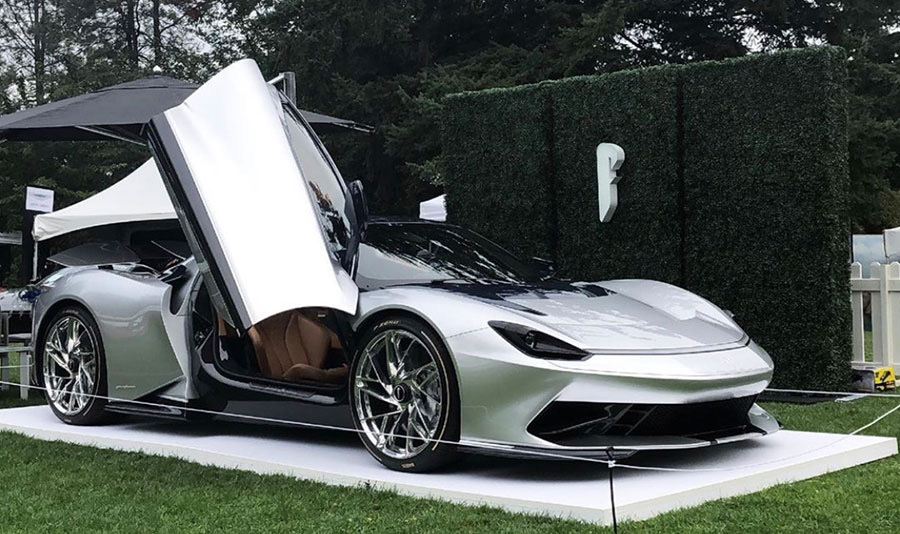
Not only did the company build Italy’s first wind tunnel in 1972, it was also one of the first studios to use computer-based design and pursue technologies such as electric cars.
The world of electrification is an ideal segue into Pininfarina’s most recent creation, the Battista.
Not only will the Battista help celebrate 90 years since the foundation of the legendary design house, it represents the creation of a unique electric hyper-GT car.
No more than 150 will be built including just five Battista Anniversario examples, priced from a whopping €2.6 million before local taxes and import duties. The standard Battista (if you can call it that) has a price tag of €1.98 million.
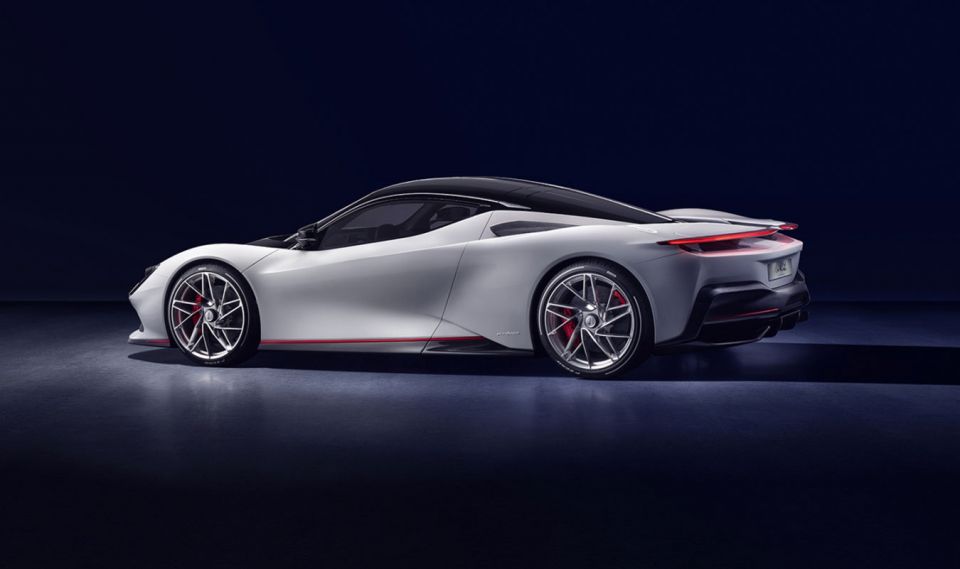
The performance claims are truly staggering. With up to 1400kW of power and 2300Nm of torque it can blast from zero to 100km/h in under 2.0 seconds, while 0-300km/h will happen in under 12 seconds. Top speed is 350km/h in the Anniversario, and 330km/h for the regular car.
Battista’s simulated WLTP range on a single charge is more than 500km, with up to 180kW DC fast-charging capability as well as 22kW AC charging.
The entire monocoque and its body panels are carbon-fibre. The chassis houses a carbon-fibre T-frame housing two liquid-cooled battery packs for optimised balance and driving dynamics.

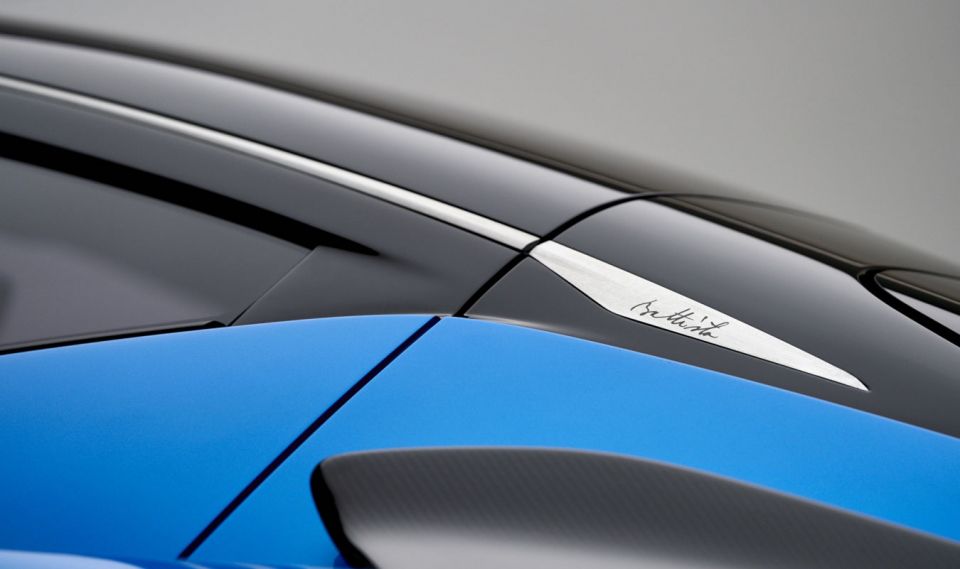
The battery includes lithium/manganese/nickel chemistry in its 6960 cells, and is supplied by electric specialists Rimac.
Four liquid-cooled permanent-magnet synchronous electric motors independently distribute power to each wheel through a sophisticated torque-vectoring system which delivers infinitely-variable dynamic responses depending on conditions.
Pininfarina claims 97 per cent efficiency with instant throttle response via all-wheel drive. There are five drive modes (Calma, Pura, Energica, Furiosa, Carattere) each of which alters amount of power generated by the drivetrain.
Dynamic testing of the car commenced earlier this year after an extensive simulation program under the watchful eye of Rene Wollmann, previously responsible for Mercedes-AMG Project One.
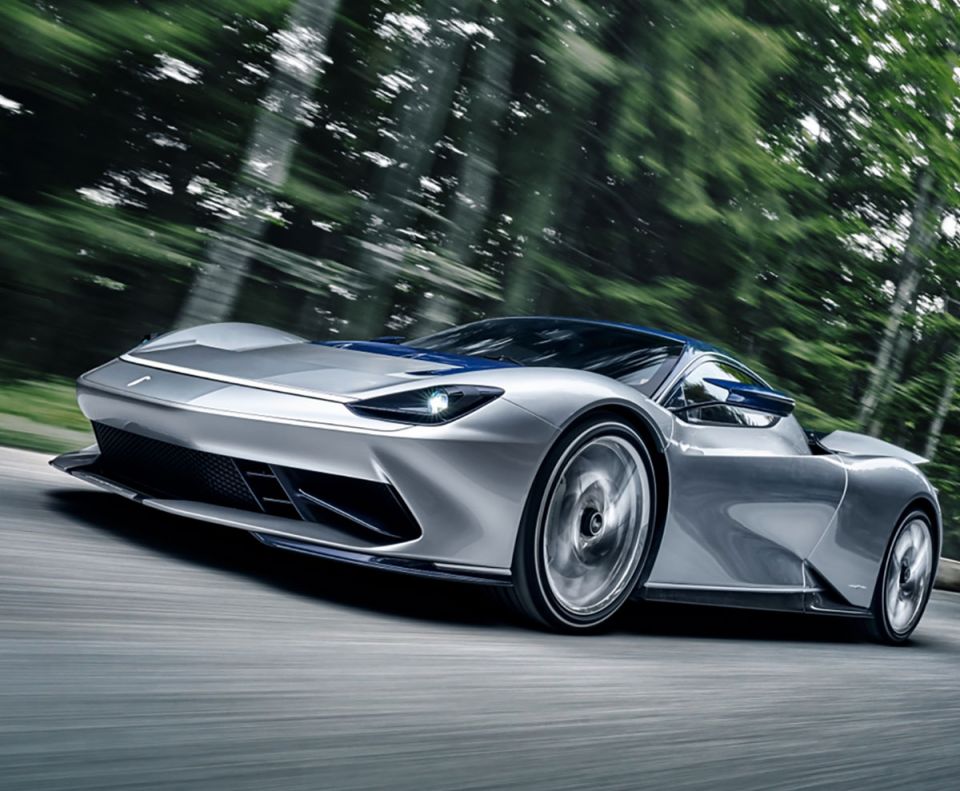
Former Formula 1 and current Formula E driver Nick Heidfeld is the test and development driver attached to the Battista, and believes the car is at the vanguard of technical capability.
“I have piloted the quickest road and race cars in the world. I’ve never driven anything as powerful as the Battista,” he said.
“It’s faster than many race cars, but it is not a pure racing machine. Drivability in all situations is its primary focus.
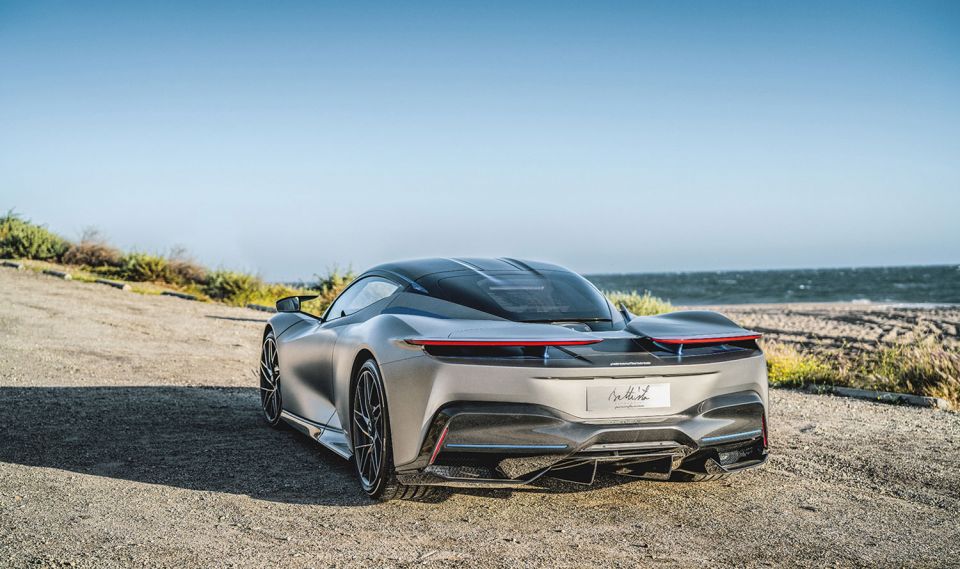
“We will now concentrate our time testing and developing Battista to deliver a car that’s at the forefront of technological possibilities and innovation.”
Automobili Pininfarina’s design team for the Battista is led by Luca Borgogno, who has previously headed up the Lamborghini design studio in Turin working on the Urus.
Moreover, the team at Pininfarina features no less than 110 staff with collective experience that includes work on the likes of the Bugatti Veyron and Chiron, the McLaren P1, Pagani Zonda, Porsche Mission E, Mercedes-AMG Project One, and the Mercedes SLS AMG electric drive.
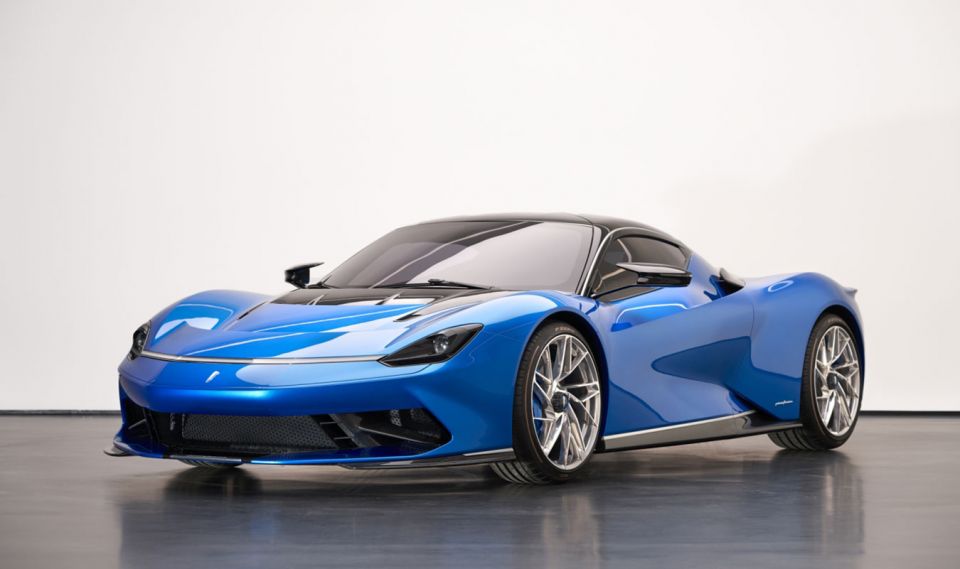
With the Battista, Borgogno took inspiration from some of the ultra-rare projects in Pininfarina’s back catalogue including the Cisitalia 202, Ferrari 512S Modulo, and Ferrari Dino Berlinetta Speciale.
The stunning teardrop shape and curvaceous lines of the Battista are signature Pininfarina, and offer a window into the brand’s design language for a range of vehicles it intends to build under its own name.
The rear wing appears to be two finely-sliced pieces capped by LED lights, but is in fact a single unit joined by an ultra-thin carbon fibre bridge. Not only does it provide significant downforce, it acts as an air brake.
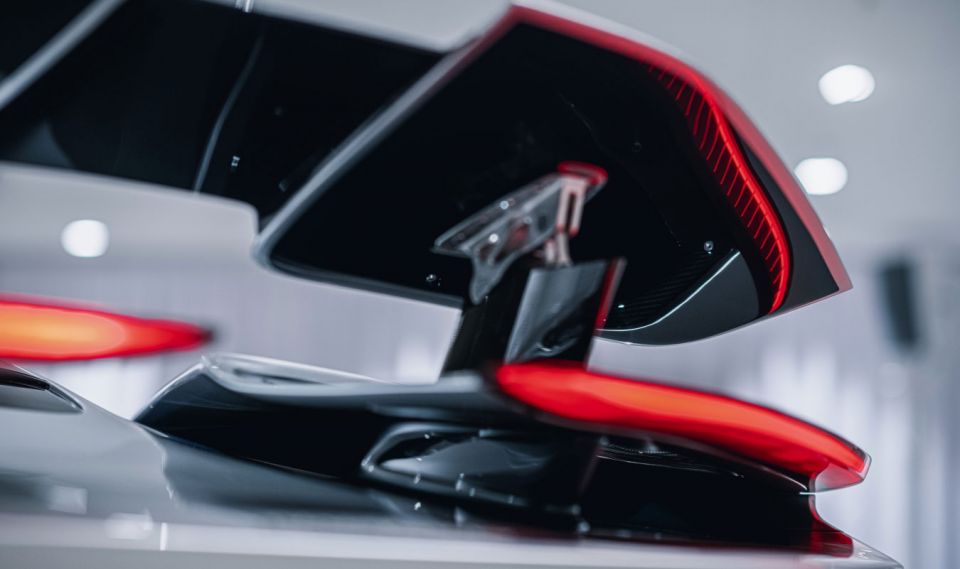
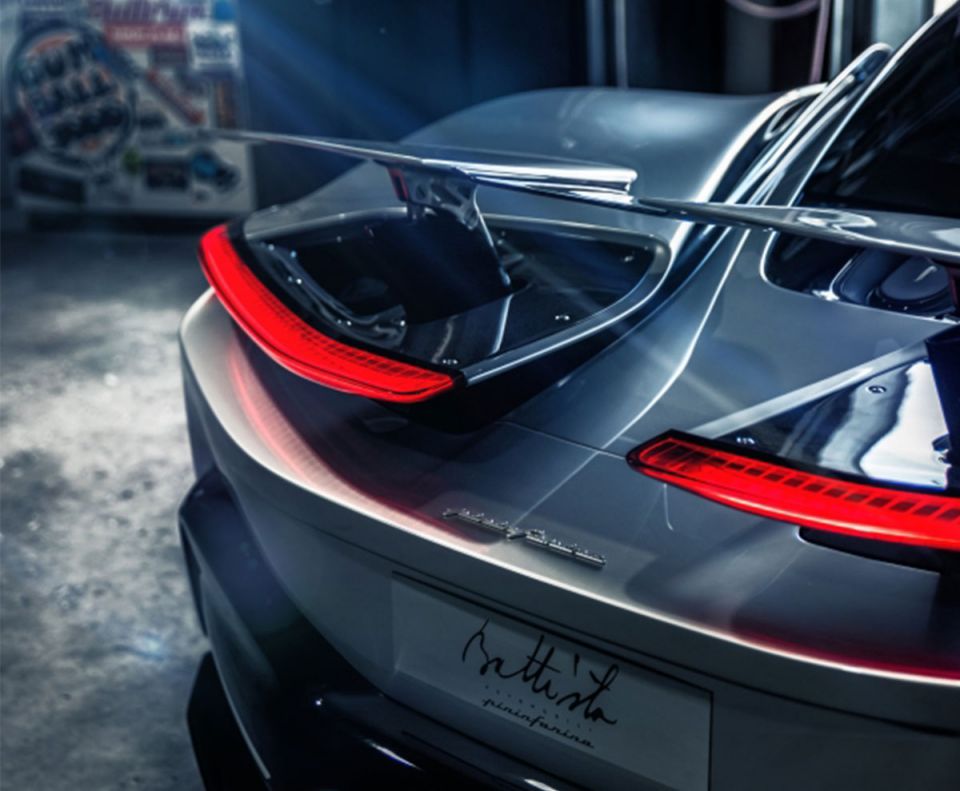
The Battista’s braking system is hugely powerful given the four individual electric motors driving each wheel. Carbon-ceramic discs measuring 390mm with six-piston calipers front and rear take care of the car’s stopping power.
Optional on the regular Battista, the Anniversario edition is equipped with the Furiosa package for greater downforce and stability at increased speeds.
It comprises a revised (from the Geneva show car) carbon fibre front splitter, side blades and rear diffuser in combination exposed carbon and signature Inonica Blu tint with pin stripes in Bianco Sestriere.
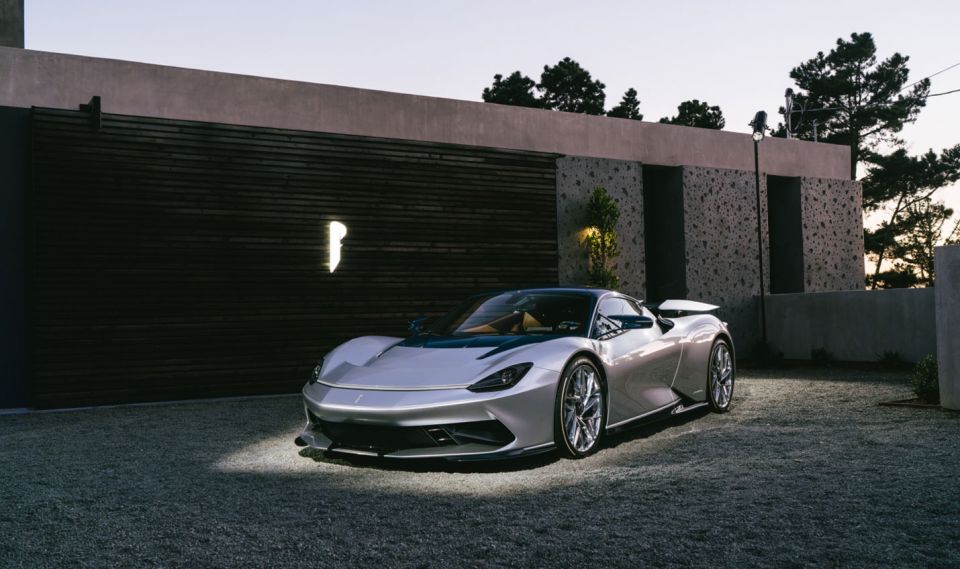

Outside of the exclusive livery, there’s also a bespoke rear wing and rear aero fins.
Handling is further enhanced by a 10kg reduction in unsprung weight due to centre-lock forged alloy wheels. The rear wheels are also larger.
Cabin access is via huge butterfly wing-style doors that when opened, leave only a thin T-Top of the carbon frame that should make entry and exit quite easy, as well as a visual side show for the public.
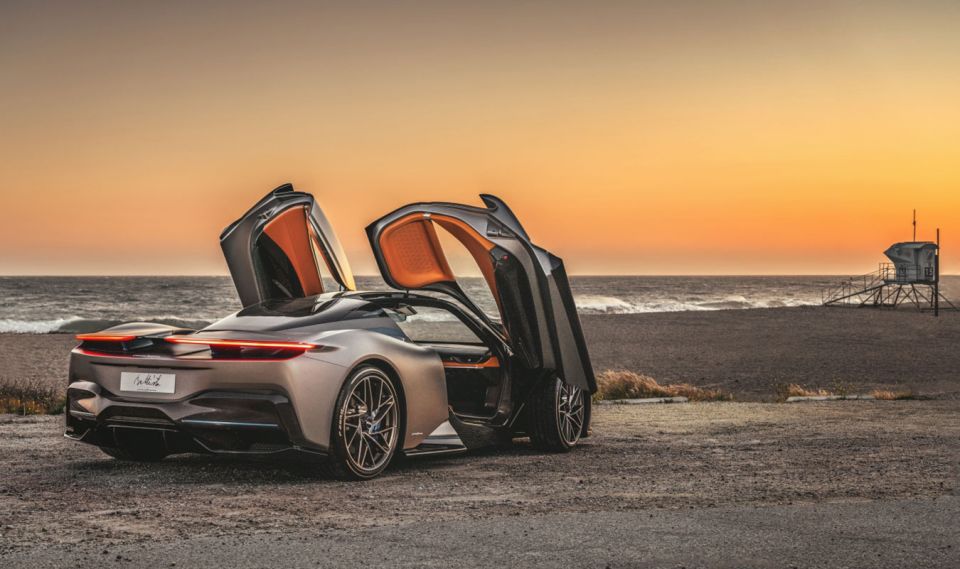
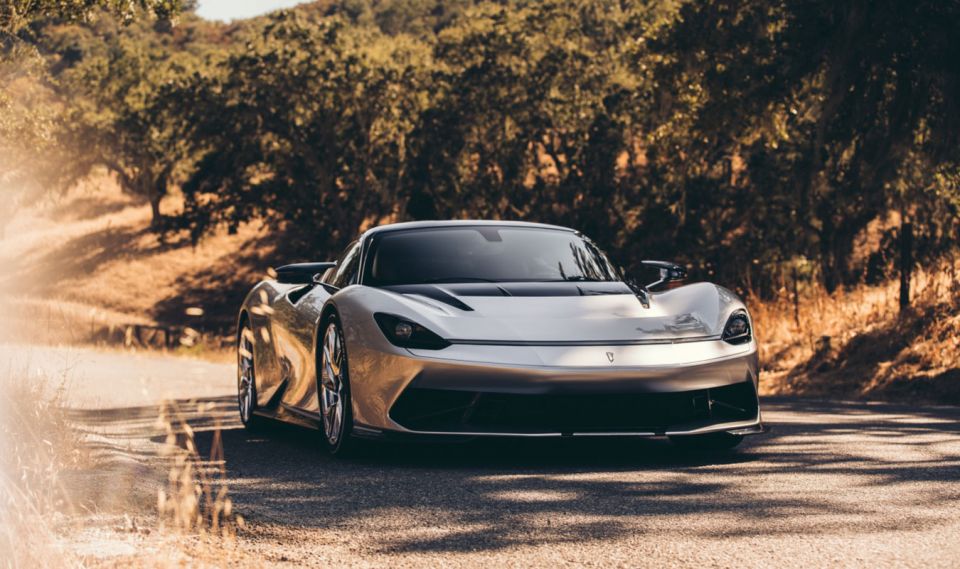
Since the car’s international reveal at Geneva in 2019, there has been ongoing development work resulting in various changes around its driver-centric cockpit.
The steering wheel, for example, has been redesigned for better control layout and improved visibility for the driver. There’s also a digital rear-view mirror for a clear view behind the car – essential given the extreme angle of the rear window.
The charging socket has also been relocated below the rear wing for easier accessibility, but Pininfarina’s signature E-heart – a pulsating light behind the rear screen – has been kept for the production car.
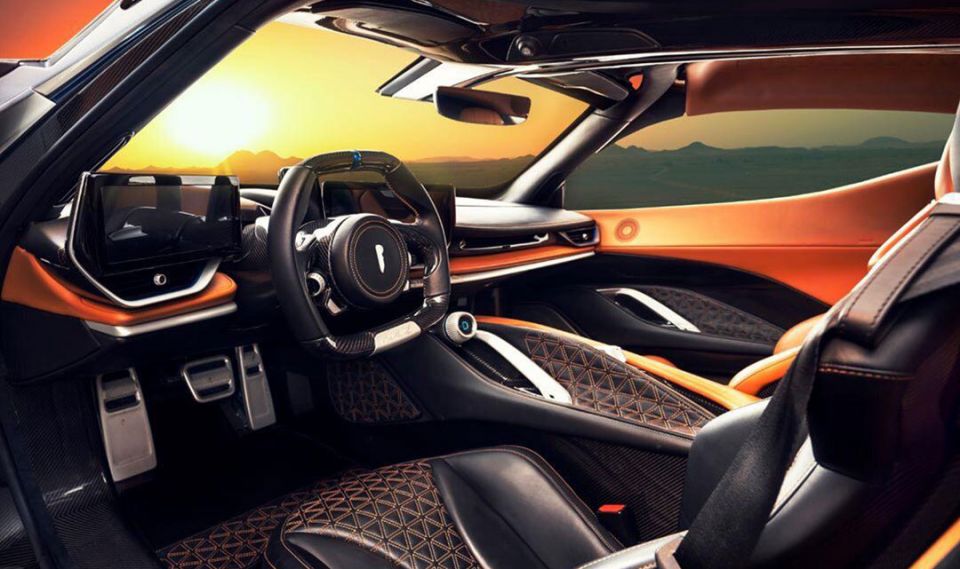

Infotainment and digital services such as real-time navigation, music streaming and advanced telemetry are delivered ‘over the air’ and are updated over the lifetime of the car thanks to a built-in eSIM connecting the Battista to the internet in over 50 countries.
The driver interface features a ‘vanishing point’ concept for the main instrument display that allows total driver focus.
Features include electrically adjustable heated seats with lumbar adjustment, a surround-view camera, and front and rear parking sensors. The car also gets a front and rear lift system for worry-free driveway access and speed bump navigation.
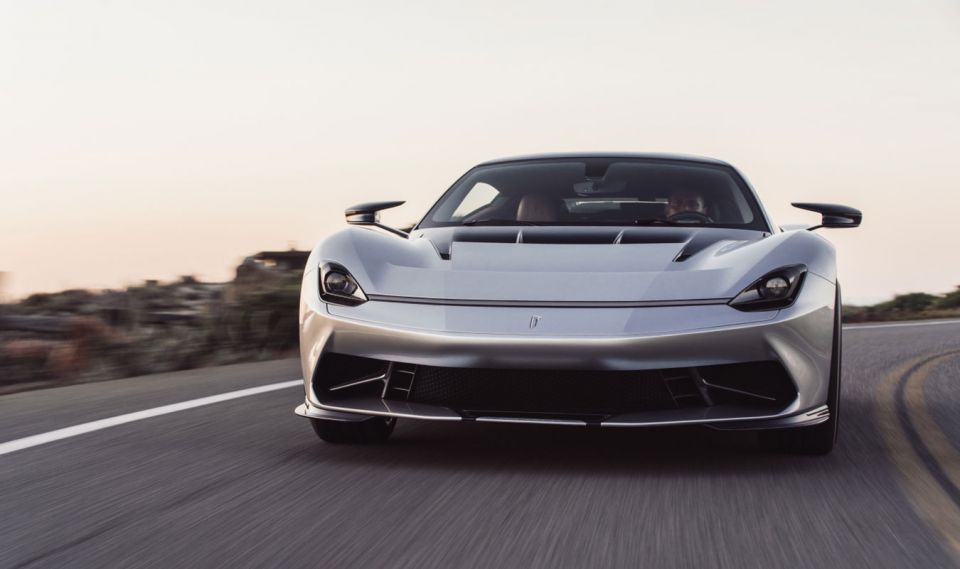

The seats themselves are by Italian racing gear specialist Sabelt and feature rear backrests, seat shoulder inserts, and inlays in exposed carbon-fibre specially tinted Iconica Blue – Pininfarina’s signature colour.
Even the brushed aluminium accents are anodised in the same Iconica Blu while the steering wheel is wrapped in black sustainable leather and exposed carbon.
Each of the five Anniversario cars is hand painted in a unique livery comprising three signature colours: Bianco Sestriere, Grigio Antonelliano and Iconica Blu. Skilled specialists take three weeks to paint each car, with a finish consisting of multiple layers in three separate colours.
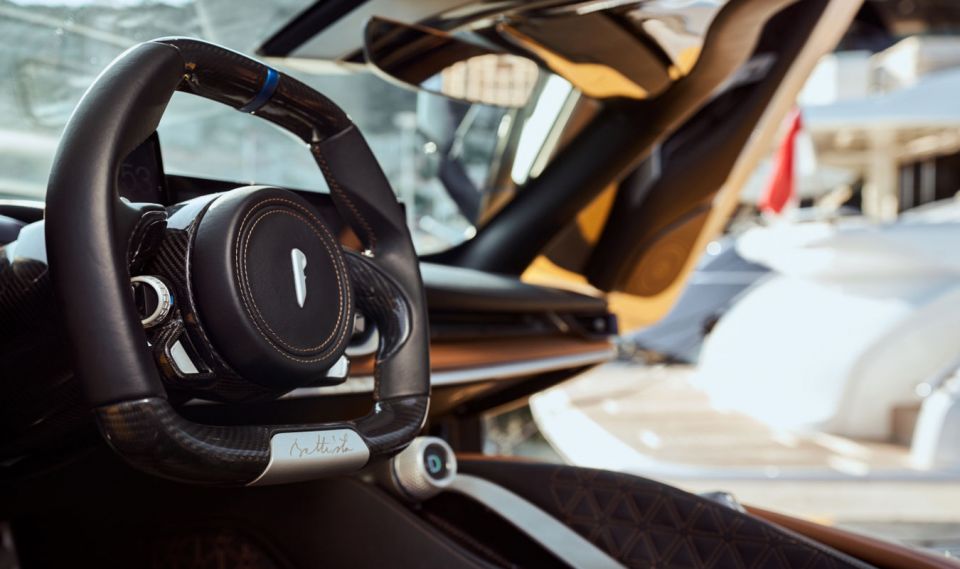
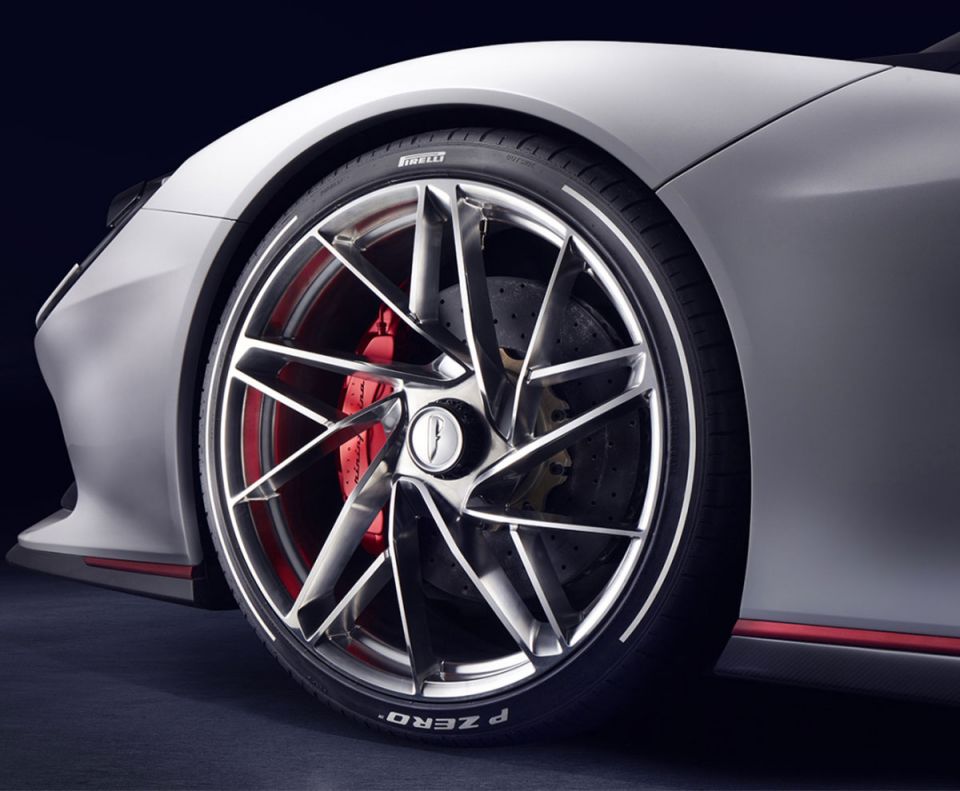
Moreover, after each coat is applied, the body has to be disassembled so the pinstripes can be hand-painted onto the body. It happens three times during the painting of the car.
Prototype development is well under way at the company’s headquarters in Turin, with plans to enter production by the end of 2020.
Anthony Crawford is a CarExpert co-founder and senior presenter with 20+years in automotive journalism and content creation.


Max Davies
3 Hours Ago


William Stopford
19 Hours Ago


Ben Zachariah
20 Hours Ago


Derek Fung
20 Hours Ago


Matt Campbell
1 Day Ago


William Stopford
2 Days Ago